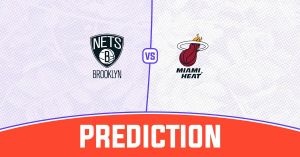SPOILER ALERT: This story contains spoilers for Season 2, Episode 4 of “Severance,” streaming now on Apple TV+.
After the shocking revelations of Season 2 of “Severance,” viewers are left reeling from the twisting plot developments of Episode 4, titled “Woe’s Hollow.” The latest installment sees the employees known as innies—Mark (Adam Scott), Helly (Britt Lower), Dylan (Zach Cherry), and Irving (John Turturro)—forced to navigate the icy wilderness on what is described as an Outdoor Retreat Team-Building Occurrence (ORTBO). Arriving at the Dieter Eagan National Forest under the dubious guidance of Lumon Industries, the group finds themselves less on a leisurely outing and more caught up in the company’s dark and twisted games.
The episode introduces viewers to the chilling lore of Lumon’s founder, Kier Eagan, and his twin brother Dieter, setting the stage for unsettling revelations about the company’s past. According to the narrative shared during their forest excursion, Dieter once lured Kier deep within the woods, where disastrous consequences ensued. This dark folklore plays significantly against the backdrop of the series' existing themes, where nothing is as it seems, and every 'gift' from Lumon is laden with ulterior motives.
Ben Stiller, the director and executive producer of the show, notes the intention behind the episode, stating, “You guys did the OTC. You want to see the outside world? This is it!” This ominous attitude established by Lumon highlights the disconnect between the employees’ perception of the retreat and the harsh realities presented to them. Audiences observe how this stark environment mirrors the innies' emotional struggles and encapsulates their desperate fight for autonomy against their employer.
During the course of the retreat, tensions flare, particularly during interactions between Irving and Helly. The pivotal moment occurs when Irving, driven by his suspicions about Helly's identity, attempts to drown her, convinced she is really her outie self, Helena Eagan. The horror of this confrontation not only shocks viewers but also serves as a culmination of the emotional and psychological battles the innies face daily. Erickson states, “The innies have come to see themselves as very distinct from the outies,” emphasizing the internal conflicts at play.
Stiller captures the intensity of the moment beautifully with Turturro’s heartfelt performance, stating, “We didn't want to use this imagery lightly,” and the invasion of Helly’s bodily autonomy by her outie underlines the morally complex narratives at play within the series. The episode culminates poignantly as Irving is let go, and his innie ceases to exist, leaving viewers questioning the irreversible consequences of his actions.
This episode is not without character development; it emphasizes how the innies' relationships morph under strain due to their disconnection from their outie counterparts. The episode tantalizingly strips each character of their security, forcing them to confront their fears and the broader corporate machinations they serve. The conflict around Mark’s relationship with Helly grows, creating romantic tension magnified by the revelations of their identities. This leads to intimate moments fraught with danger and misunderstanding as they navigate their complicated emotional landscapes.
One of the underlying themes apparent throughout this episode is the examination of control and narrative. Erickson highlights this, noting, “Lumon is in complete control of the narrative,” paralleling the figures of authority within our societies. By taking the characters outside of their familiar confines, the showrunners offer commentary on the struggle of individuals against corporate and social structures.
Critically, the show’s aesthetic choices contribute to its storytelling effectiveness. The snow-covered backdrop serves not just as setting but as symbolic representation of the cold, harsh treatment the innies receive from their employer. Stiller recounts the filming process, recalling how they needed real snowfall to create the authentic winter atmosphere, reinforcing the chilly unease of their environment.
More than just horror, the episode retains its ironic humor, allowing the juxtaposition of unsettling and comedic moments to shine through. The creators strive to enrich the narrative with layers of complexity—balancing horror with humor, much like the duality of the characters themselves. This tightrope act of emotional engagement is what makes “Severance” such compelling viewing.
Fan reactions to Episode 4 highlight the effectiveness of the series’ storytelling—many viewers found themselves piecing together hints about Helly's true identity prior to its reveal, making their lightbulb moments all the more rewarding. “It’s funny, because Severance is, in some ways, about storytelling,” said Erickson, acknowledging the show's complicated play with audience expectations.
Behind the narrative layers, the show tackles broader themes of power, autonomy, and the moral dilemmas presented by corporate systems reminiscent of our reality. This intertwining of personal and structural conflict resonates, inviting the audience to question the ethics surrounding employee treatment and autonomy.
With the departure of Irving and the revelations surrounding Helly, viewers are left to wonder what lies next within the twisted world of “Severance” and how these developments will shape the character arcs moving forward. This episode’s dedicated exploration of themes such as identity, control, and rebellion positions “Severance” firmly within the conversation about contemporary corporate life and personal agency—leaving audiences eagerly anticipating future twists and revelations.



